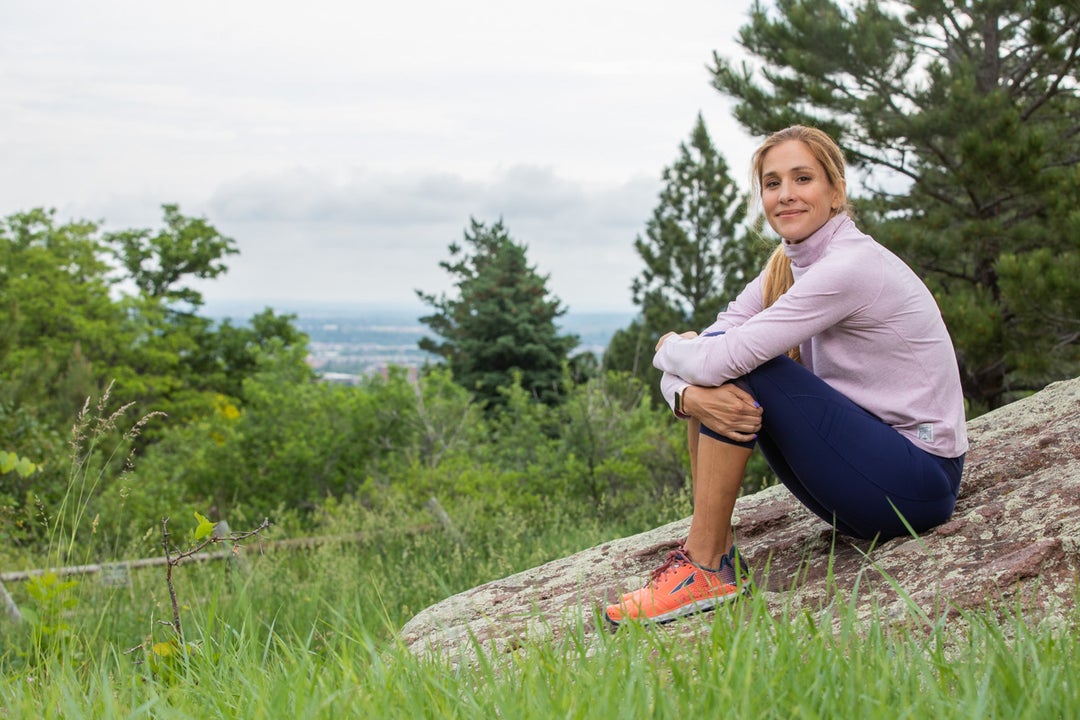Products You May Like
Get access to everything we publish when you
sign up for Outside+.
World championships silver medalist and two-time Olympian Kara Goucher announced today that she has been diagnosed with runner’s dystonia.
“For the past year I’ve been quietly battling for my health,” she wrote on Instagram. In the post she described difficulties she’s had staying balanced while walking and running and numbness in her legs.
Goucher courageously shared her diagnosis and the implications it would have on her life. “The doctor confirmed repetitive exercise dystonia, and tried to tell me, as gently as possible, that the more I run the worse my symptoms will get. I have to drastically cut back or not only will I lose the ability to run at all, I will struggle to walk as well,” she wrote.
It’s important to note that the disorder is considered rare—though dystonias in general are the third most common movement disorder in the United States. Here’s more about what runners should know about repetitive exercise dystonia.
RELATED: Smell Ammonia? Taste Metal? Your Body’s Trying to Tell You Something
What is a Dystonia?
A dystonia is classified as an involuntary muscle contraction, affecting different parts of the body depending on the type. Symptoms can range from foot cramping or dragging to tremors or difficulty speaking.
Like a lot of neurological disorders, the exact cause of dystonia is unknown, though the American Association of Neurological Surgeons cite an alteration in regions of the brain or communication between those regions as a likely cause. According to the Dystonia Medical Research Foundation the disorder “can be caused by a staggeringly diverse variety of factors and conditions.”
Dystonia can be idiopathic (having no clear cause of onset), genetic, or acquired. That diversity in causes makes it difficult to study, but researchers are trying to understand what common mechanisms might connect them.
What is Runner’s Dystonia?
Runner’s dystonia is a type of task-specific dystonia. According to the National Institute of Neurological Disorders and Stroke, these dystonias occur only when participating in a repetitive activity. Runners might experience it in their lower limbs, while writers, pianists, and singers may have similar flare ups in their respective musculature.
RELATED: When Should You Skip a Run?
Runner’s dystonia is most likely to present itself in distance runners. Symptoms can include an unusual gait, involuntary toe clawing or extending, knee hyperextension, or weight shifting to the inner or outermost planes of the foot (ankle supination or inversion). The involuntary muscle movements can also spread to the trunk or pelvis.
Unfortunately, there is no cure or preventative medications, though there are some ways to ease the symptoms. Doctors may prescribe off-label medications, surgery, deep brain stimulation, physical therapy, or botulinum toxin (Botox) injections to decrease muscle spasms.
If you’re experiencing involuntary muscle movements, you should see a doctor to rule out any other movement disorders like Parkinson’s disease. If you suspect you have runner’s dystonia, a specialized neurologist called a movement disorder specialist can help you understand the disorder better.
Runners With Dystonia
Runners who have this disorder might have to dial back their training, but often find ways to keep running in their life. They meet up in supportive Facebook groups to share tips, stories, and lean on one another.
Justine Galloway, for example, set a Guinness World Record for running the fastest half marathon backwards. After her runner’s dystonia diagnosis she began seeing a physical therapist. It was with her PT that she discovered that her legs wouldn’t fail her if she were running backward.
“I fought for the ability to continue to run,” Galloway told Women’s Running back in 2015. To this day she continues to train and run races backwards.
As for Goucher, she shared that while she was grateful her diagnosis wasn’t multiple sclerosis (MS) or amyotrophic lateral sclerosis (ALS)—two diseases that were ruled out for her—she has to accept that her relationship to running will have to change. She admits that is hard.
“I loved running before I knew I was good at it. It made me feel alive, to push, to feel my lungs expand. It has been one of the most glorious aspects of my life. From the silent meditation on a solo run to representing my country at the Olympic Games. I’m not sure where running ends and I begin, we are so intertwined as one. I’m unsure what the future holds, but I’m trying to embrace it.”
RELATED: Counterintuitive Bodily Responses, and Why They Happen
